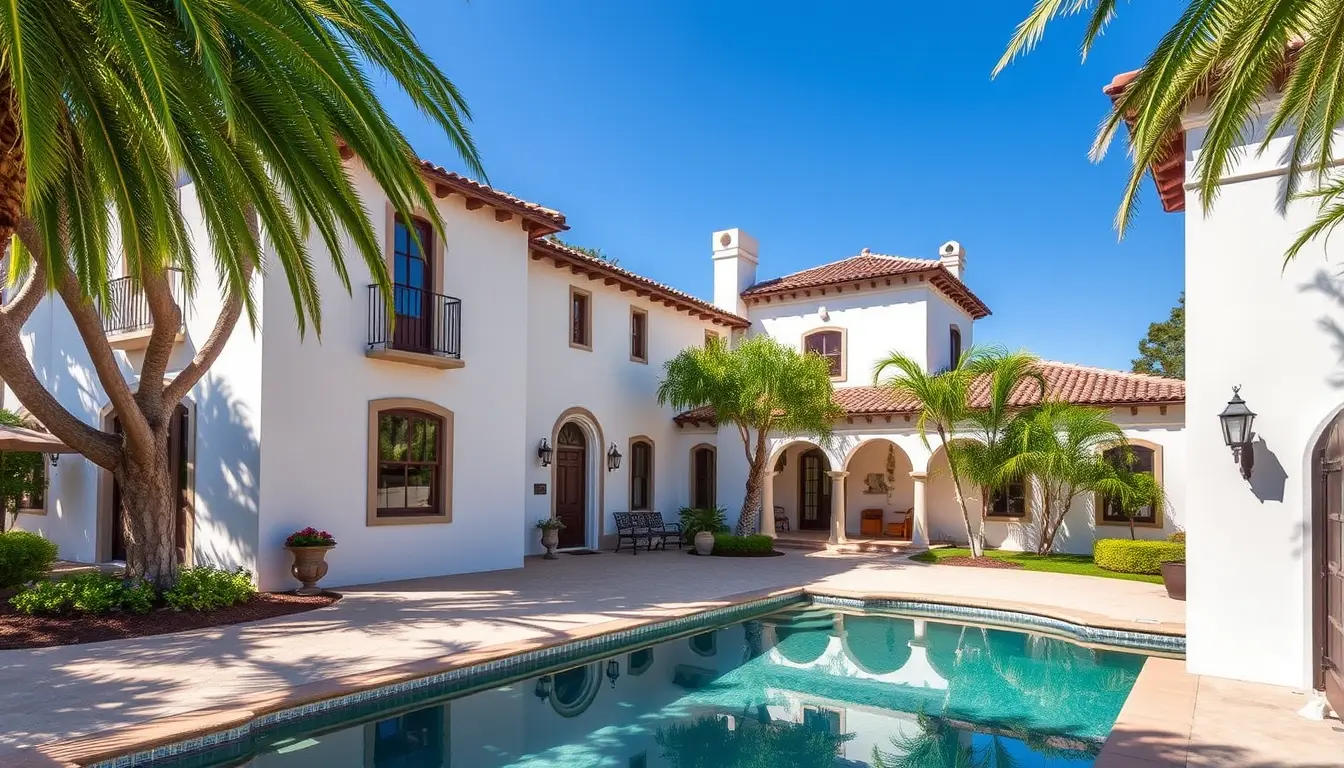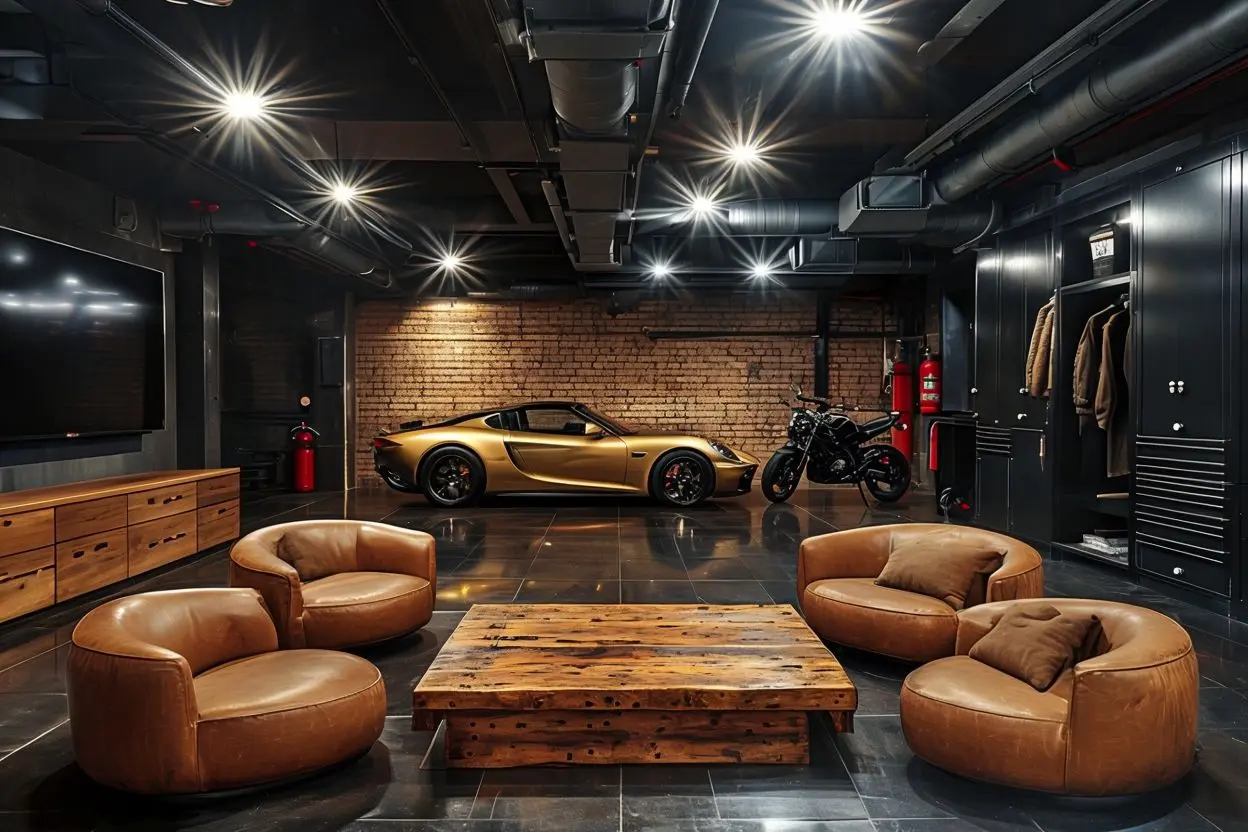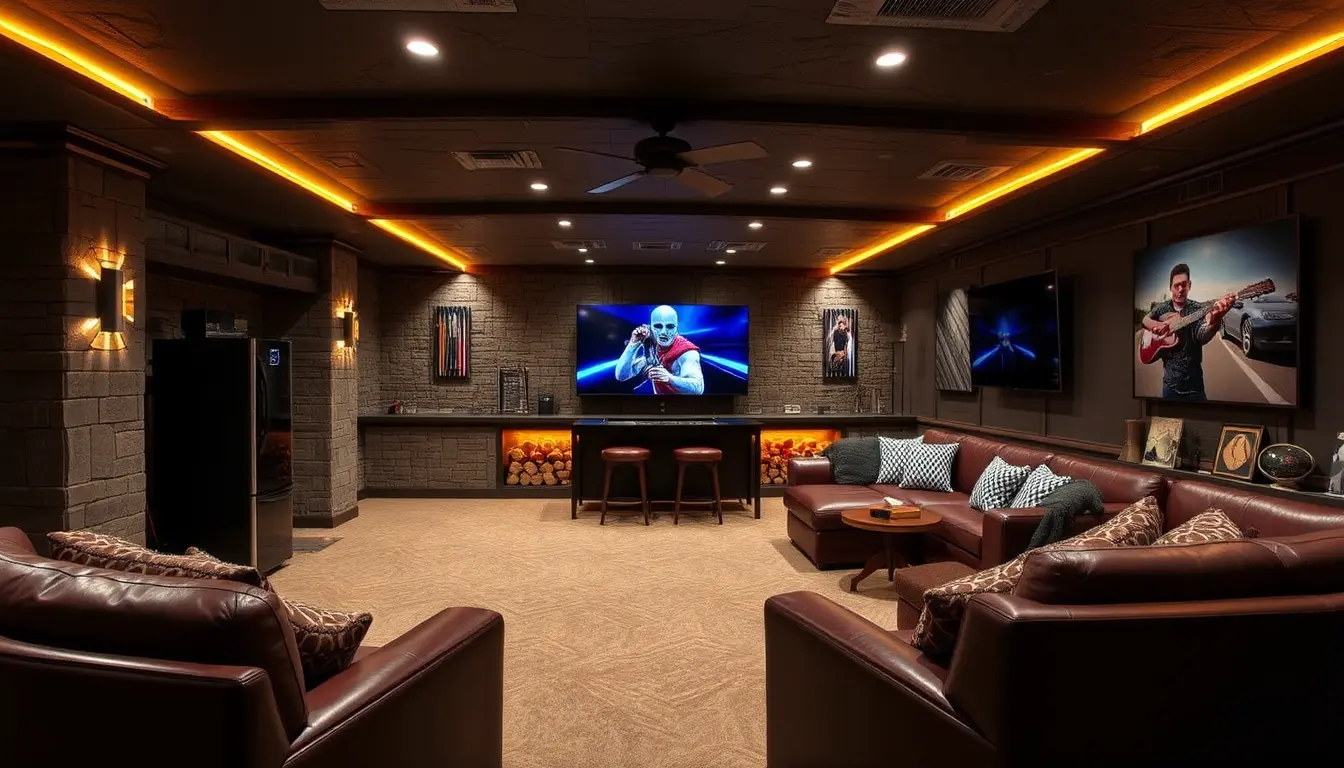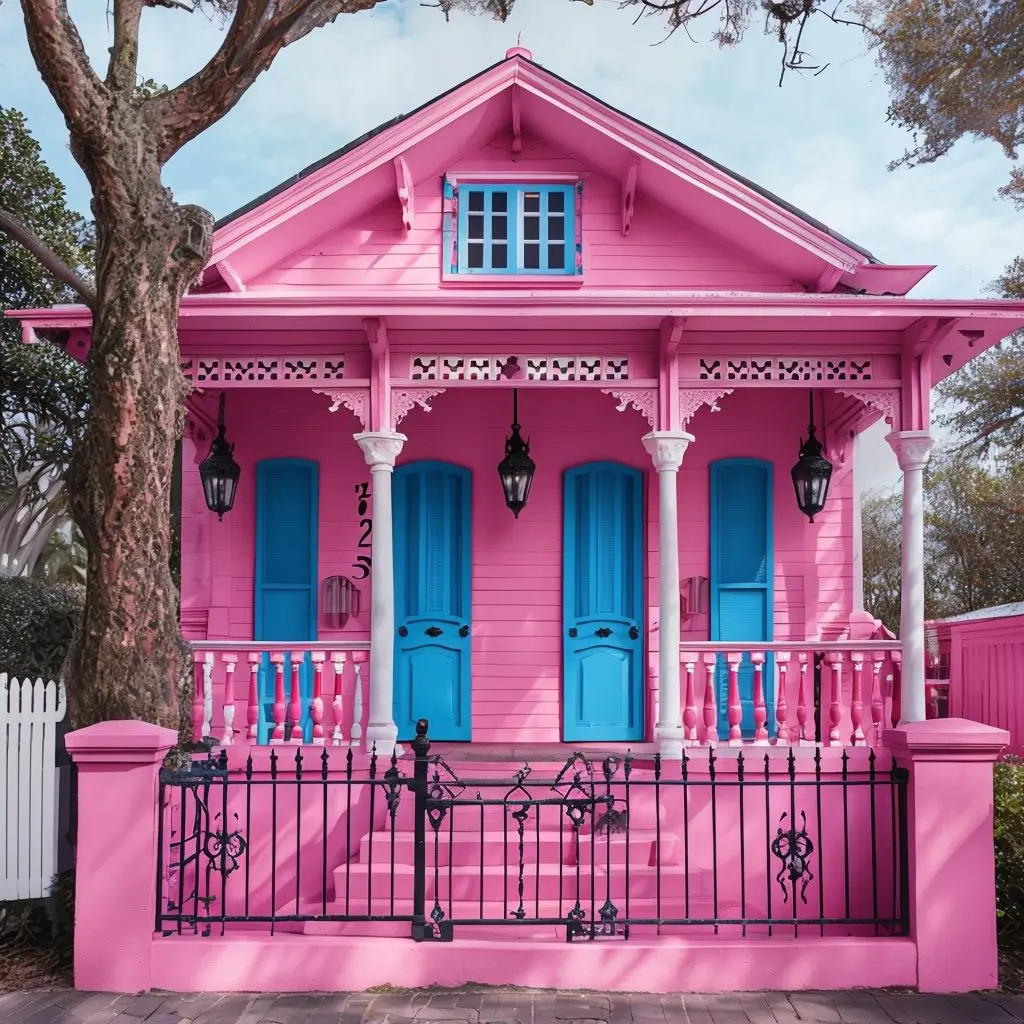Spanish Style Homes: Timeless Elegance and Mediterranean Charm
Spanish-style homes are known for their red tile roofs, stucco walls, and arched doorways. These key features give homes their unique look. Inside, you’ll often find exposed wooden beams, wrought iron details, and colorful tilework. It’s like stepping into a cozy hacienda!
One of my favorite things about Spanish-style homes is how they connect indoor and outdoor spaces. Many have beautiful courtyards or patios perfect for relaxing or entertaining. The design lets you enjoy the sunshine and fresh air. Plus, the thick walls help keep the house cool in hot weather.
Key Takeaways
- Spanish-style homes blend Old World charm with modern comforts
- Key features include red tile roofs, stucco walls, and arched doorways
- These homes often have beautiful outdoor spaces that connect with the interior
Historical Evolution of Spanish-Style Homes
Spanish-style homes have a rich history that spans centuries. They’ve changed over time, blending different influences and adapting to new needs and tastes.
Spanish Colonial Beginnings
Spanish Colonial homes started popping up in the 1600s in areas ruled by Spain. I’ve noticed these homes are common in the Southwest, California, and Florida. They were built to suit hot climates, with thick walls to keep things cool inside.
The homes had simple designs with a mix of Native American and Spanish features. I love how they used local materials like adobe bricks and clay roof tiles. These homes often had small windows, inner courtyards, and wooden support beams.
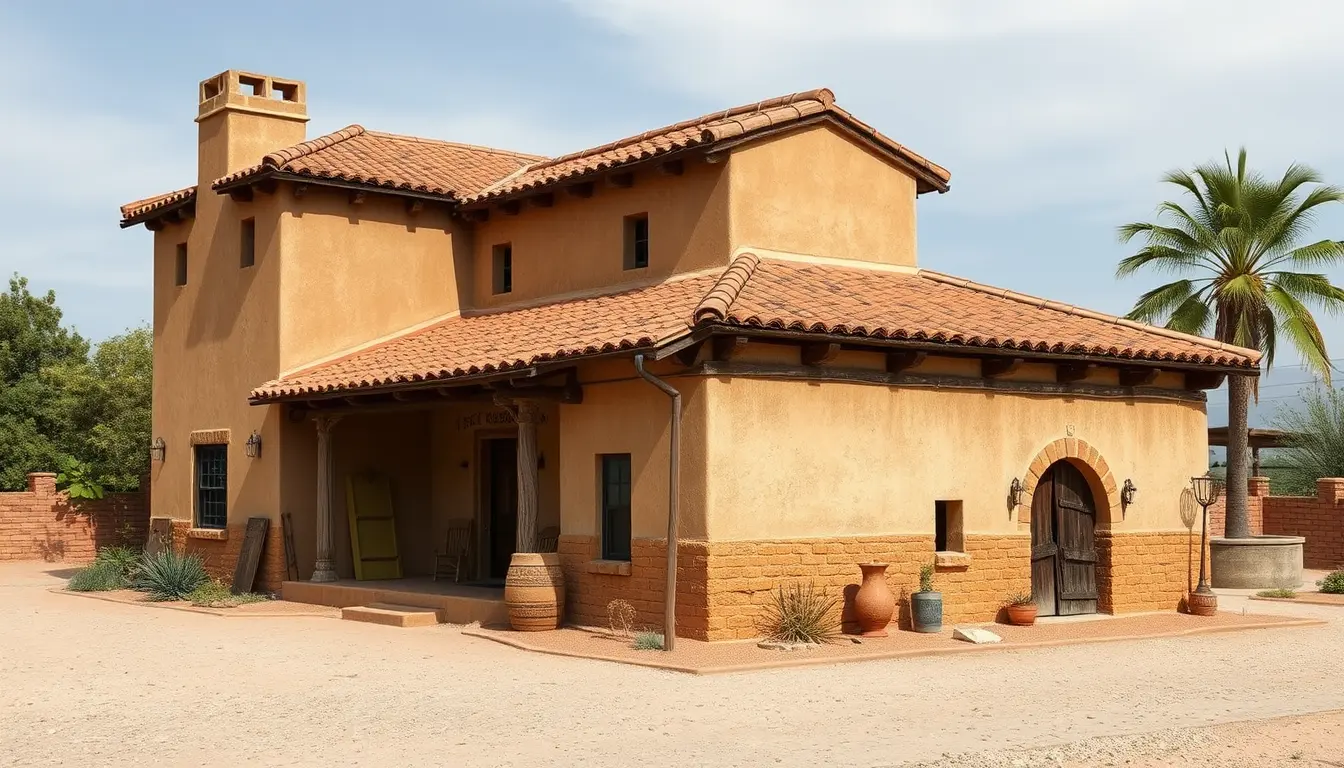
Spanish Revival and Modern Iterations
In the early 1900s, Spanish Revival styles became popular. I’ve seen how they kept many old features but added new twists. The Panama-California Expo in 1915 kicked things off, showing off Spanish-inspired buildings.
Architects like Bertram Grosvenor Goodhue played a big role. They mixed in other styles like Moorish and Mediterranean. I’ve noticed these homes often have:
- Red tile roofs
- White stucco walls
- Arched doorways
- Wrought iron details
- Colorful tiles
Today, Spanish-style homes still charm people. They mix old-world charm with modern comforts. I think their timeless look and cozy feel will keep them popular for years to come.
Defining Architectural Features: A Journey Through Spanish Style Design
Spanish-style homes have unique features that make them stand out. I’ll explore the key elements that give these houses their distinct look and feel.
Exterior Characteristics: More Than Just a Pretty Face
When I first started exploring Spanish-style homes, I realized their exteriors are like carefully composed paintings. Take the stucco walls – they’re not just surfaces, but storytellers that capture the essence of Mediterranean light and landscape. I’ve walked through neighborhoods in Arizona and California where these walls seem to glow with a warmth that makes you want to reach out and touch them.
The red-tiled roof is where the home truly comes alive. These aren’t ordinary roof tiles – they’re architectural poetry. Each clay tile is a masterpiece of function and beauty, designed to do more than just look stunning. In hot climates, they create natural air pockets that keep the house cool, a brilliant design passed down through generations. I remember walking through Santa Fe, where these roofs looked like burning embers against the desert sky, each tile telling its own story of craftsmanship.
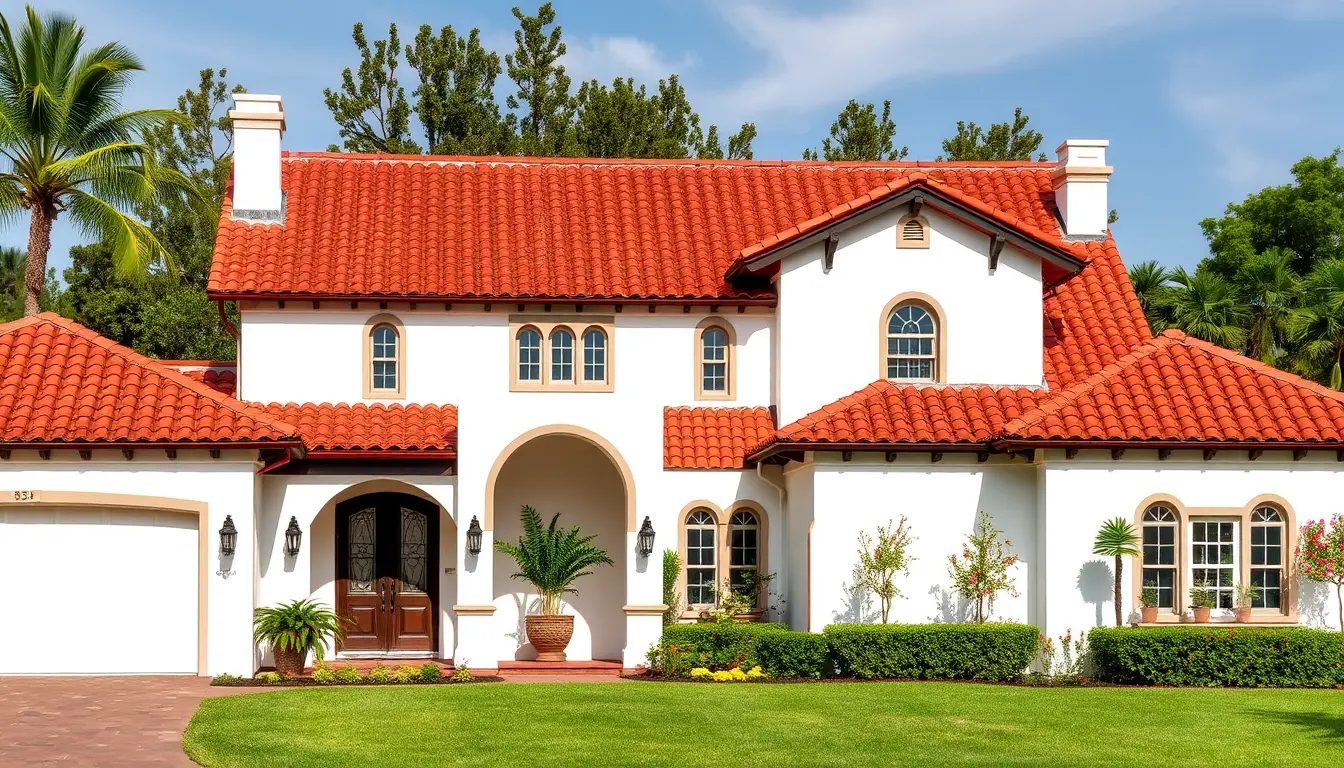
Wrought iron details are the home’s statement jewelry. I’ve seen balconies with railings so intricate they look like delicate lace, yet strong enough to withstand decades of harsh winds. These aren’t mass-produced elements – they’re handcrafted stories of local artisan skill. Each curve and swirl speaks of tradition, of hands that carefully bent and shaped metal into something both beautiful and functional.
The windows tell their own tale. Often smaller and strategically placed, they’re not just openings, but carefully considered design elements. They protect from intense sunlight while creating a sense of mystery and depth. Imagine small, deep-set windows that peek out like curious eyes, filtering sunlight and keeping the interior cool and comfortable.
Interior Design Elements: A Journey Through Living Spaces
Step inside a Spanish-style home, and you’re transported to another world. The wooden ceiling beams aren’t just structural elements – they’re time travelers. Each beam carries the weight of history, often hand-hewn and carefully placed. I love running my hand along these beams, feeling the texture that speaks of traditional building techniques passed down through generations.
Arches are the home’s internal poetry. They’re not just doorways or windows – they’re magical transitions between spaces. In a Spanish-style home, an arch isn’t merely an architectural element; it’s an invitation. An invitation to move from one space to another, to discover what lies beyond. They create a sense of flow that makes the entire home feel like one continuous, breathtaking story.
The interior tiles are where the real magic happens. I’ve seen staircases that look more like living art than functional elements, with intricate patterns that blend blues, yellows, and whites. Each tile is a tiny canvas, telling a story of cultural heritage and artistic expression. They’re not just decorative – they’re memories captured in ceramic.
The color palette has a warm embrace. Think of soft terracotta, rich browns, and gentle yellows that make you feel like you’re basking in perpetual sunshine. These colors aren’t just chosen – they’re carefully curated to create a sense of warmth and welcome that makes you want to settle in and never leave.
And then there’s the interior courtyard – the absolute heart of the home. It’s not just an outdoor space; it’s a sanctuary that blurs the lines between inside and outside. I remember visiting a restored Spanish-style home where the courtyard felt like a secret garden. Sunlight filtered through carefully placed plants, creating a magical space that connected the indoor and outdoor worlds most breathtakingly.
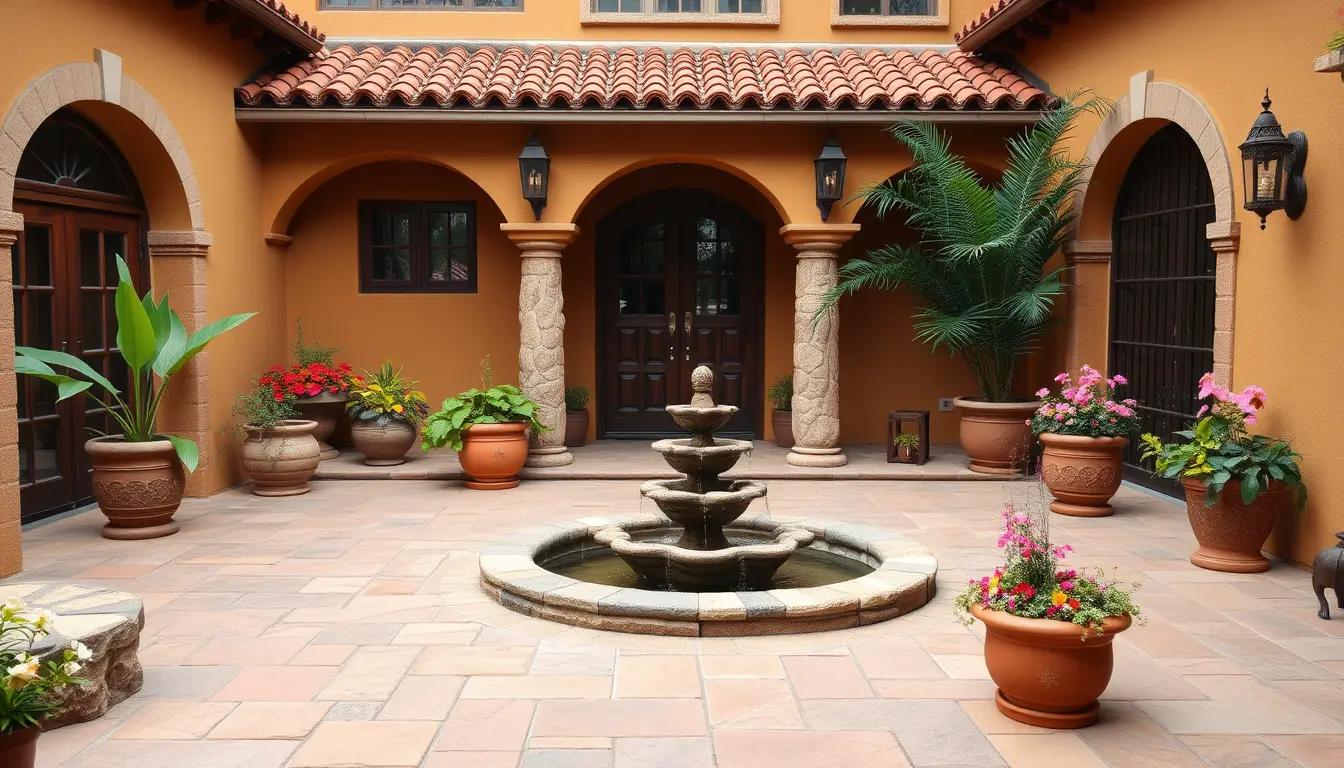
These homes are more than just buildings. They’re living, breathing spaces that capture a unique architectural spirit. They tell stories of cultures blending, of traditions preserved, of beauty that transcends time. Each arch, each tile, and each carefully placed beam is a testament to an architectural style that continues to captivate and inspire.
When you walk into a Spanish-style home, you’re not just entering a building. You’re stepping into a narrative – one of warmth, history, and timeless elegance.
Key Elements of Spanish-Style Homes
Spanish-style homes have unique features that set them apart. These elements create a warm, rustic charm that’s both beautiful and functional.
Materials and Textures
I love how Spanish-style homes use natural materials to create texture and depth. Smooth plaster walls are a hallmark, giving a clean look that’s easy to maintain. These walls often have a slightly uneven finish, adding character.
Clay and terracotta roof tiles are another must-have. Their reddish-orange hue stands out against the sky and adds warmth to the overall look.
Wooden elements play a big role too. I’ve seen beautiful wooden shutters that not only look great but help control light and temperature.
Decorative tiles are a fun way to add pops of color and pattern. You’ll often find them on staircases, in bathrooms, or as kitchen backsplashes.
Colors and Palettes
The colors in Spanish-style homes are inspired by nature. I always notice the use of warm, earthy tones that create a cozy feel.
White is a popular choice for walls. It keeps spaces bright and airy, perfect for letting in lots of natural light.
Here’s a quick look at common colors:
- Earth tones: Beige, tan, brown
- Warm hues: Terracotta, rust, ochre
- Accent colors: Deep blue, green, yellow
I find that these colors work together to create a balanced, inviting space. They reflect the Spanish colonial revival style while feeling fresh and modern.
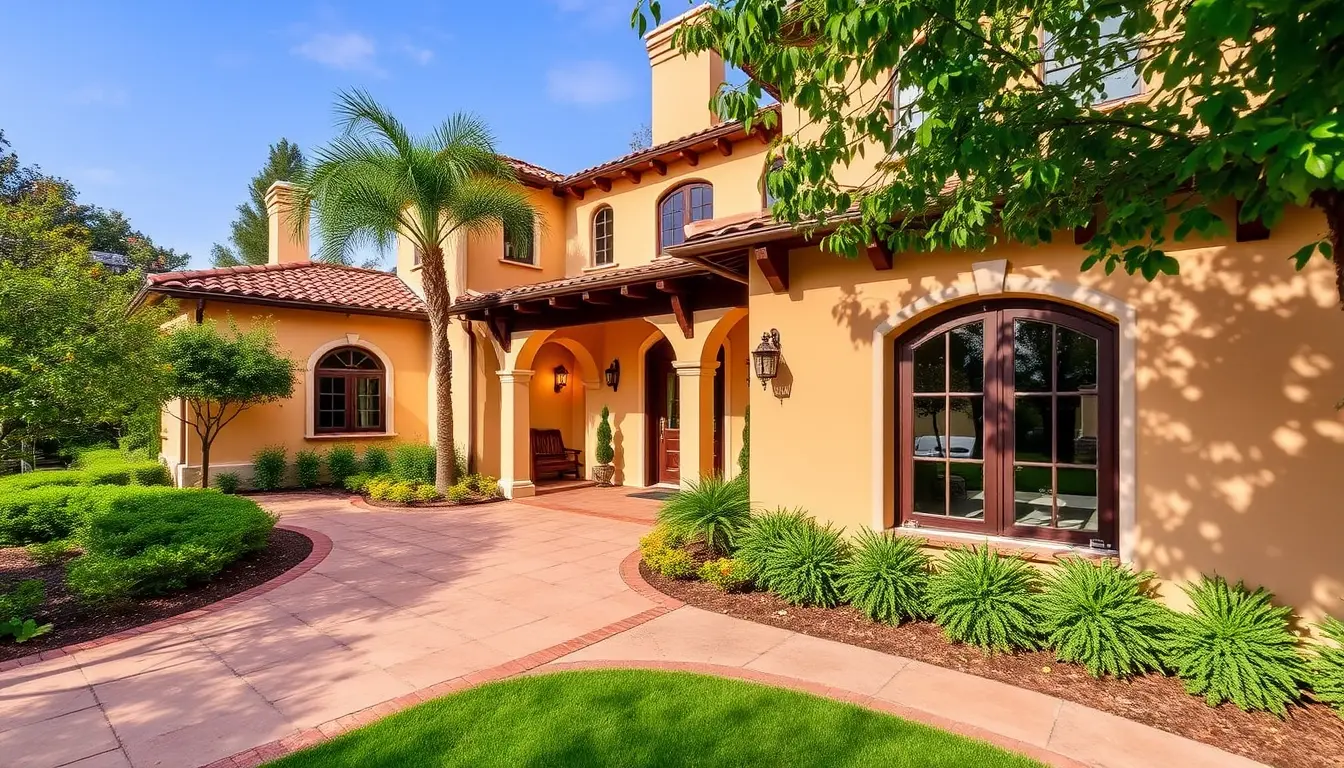
Landscaping and Outdoor Spaces
Spanish-style homes are known for their beautiful outdoor areas. These spaces blend indoor and outdoor living, creating a warm and inviting atmosphere. Let’s explore how to make the most of your Spanish-inspired landscaping.
Gardens and Patios
I love how Spanish-style homes use courtyards and patios to create cozy outdoor living spaces. These areas often have terra cotta tiles or decorative stonework. I like to add colorful potted plants and water features to create a relaxing vibe.
A key element I always include is comfortable seating. Wrought iron furniture with plush cushions works well. I also like to hang string lights or lanterns for a magical evening atmosphere.
For plants, I go for drought-resistant options like succulents and cacti. They fit the Spanish theme and are easy to care for. Climbing vines on walls or pergolas add a nice touch too.
Integration with the Environment
When I design outdoor spaces for Spanish-style homes, I focus on blending them with the natural surroundings. I use local materials like adobe or stucco for walls and structures. This helps the home feel like it belongs in its setting.
I love creating multi-level spaces with steps or terraces. It adds interest and can help with sloped yards. Small fountains or ponds are great for bringing in the sound of water.
For privacy, I plant tall grasses or trees along property lines. This creates a natural barrier that looks better than a fence. I also like to include an outdoor kitchen or fireplace for year-round enjoyment of the space.
Interior Décor and Furnishing
Spanish style homes have a warm and inviting feel. I love how they mix earthy colors with rustic elements to create a cozy atmosphere.
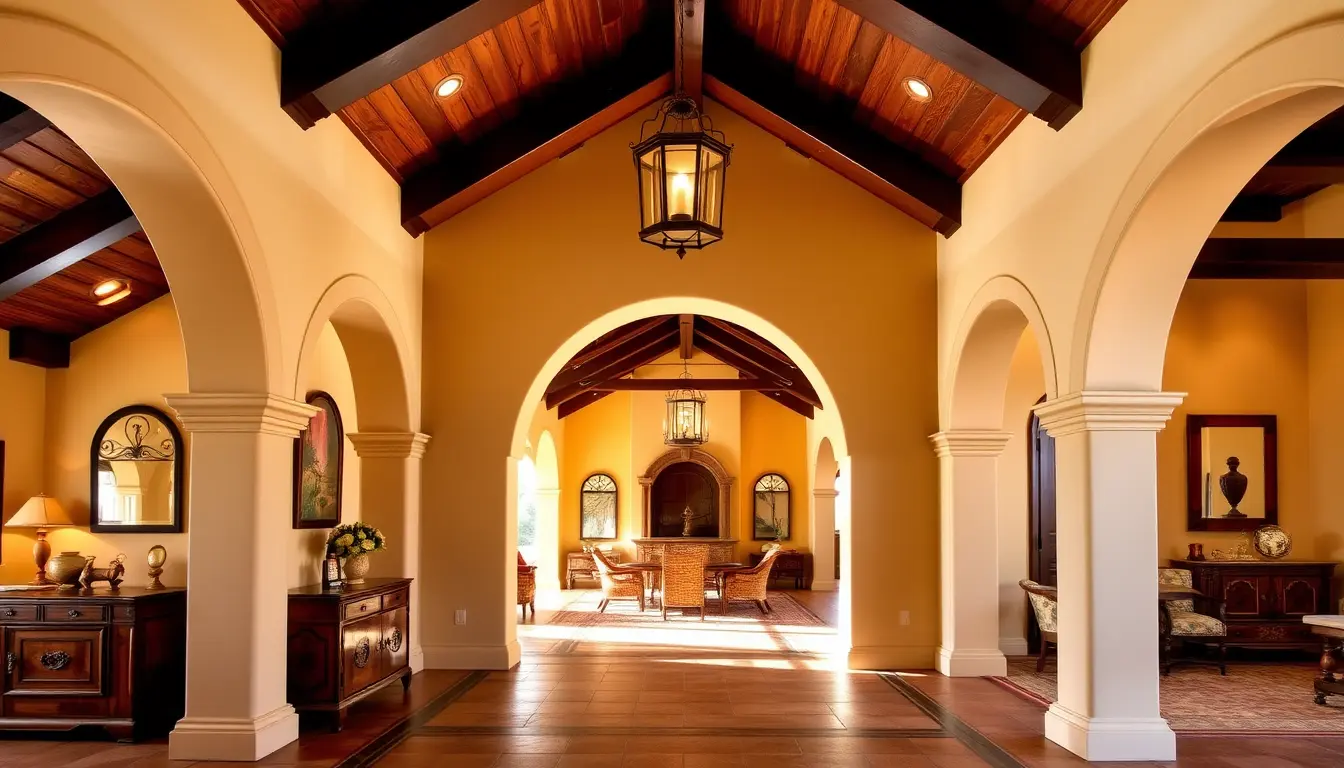
Furniture and Accents
When I decorate a Spanish-style home, I focus on dark wood furniture. Heavy wooden tables, chairs, and cabinets add a rich, traditional look. I often use wrought iron accents too. These might be bed frames, mirror frames, or even candleholders.
For a softer touch, I add colorful throw pillows and rugs. These bring in pops of reds, oranges, and blues. Painted tiles are another fun way to add color. I like to use them as backsplashes or decorative wall pieces.
Wall niches are a cool feature in Spanish homes. I use them to display vases, statues, or plants. It’s a great way to show off special items without cluttering surfaces.
Lighting and Ambiance
Lighting is key in creating the right mood. I love using wrought iron chandeliers with candle-like bulbs. They cast a warm, cozy glow that’s perfect for Spanish interiors.
Wall sconces are another great choice. I place them along hallways or next to fireplaces for extra ambiance. For a modern twist, I sometimes use steel lighting accents.
Natural light is important too. I keep window treatments light and airy. This lets in plenty of sunshine, which is a big part of the Spanish-style vibe.
Lastly, I like to add some greenery. Potted plants or even a small indoor tree can bring life to a room. It ties in with the natural, earthy feel of Spanish décor.
Architectural Influences and Inspirations
Spanish-style homes blend various cultural elements to create a unique and beautiful aesthetic. I’ve found that these homes draw inspiration from a rich tapestry of architectural traditions, resulting in their distinctive charm.
Moorish Impact
The Moorish influence on Spanish-style homes is undeniable. I’ve noticed that many of these houses feature intricate tilework and arched doorways, reminiscent of Islamic architecture. Courtyards, a common Moorish element, are often central to these homes, providing a peaceful outdoor space.
Decorative ironwork is another Moorish-inspired feature I love. It adds elegance to windows and balconies. The use of vibrant colors and geometric patterns in tiles and mosaics also reflects this influence.
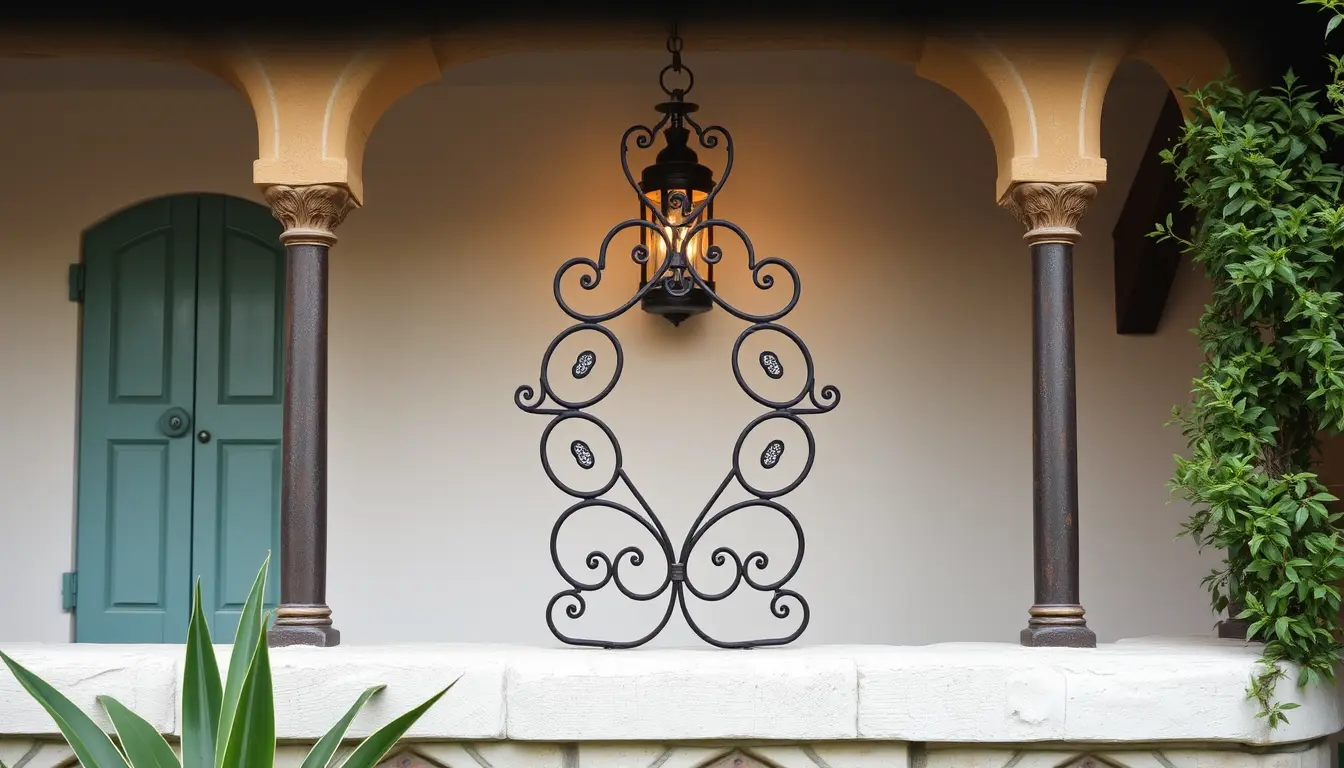
Spanish and Mediterranean Cross-Pollination
Spanish-style homes also borrow heavily from Mediterranean architecture. I’ve seen how these houses often have stucco walls and terracotta roof tiles, typical of Mediterranean climates. Large windows and open floor plans help create a breezy, relaxed atmosphere.
Spanish Colonial and Mission Revival styles play a big role too. I’ve noticed that many homes feature thick walls, which help keep interiors cool. Bell towers and elaborate entryways are common sights, adding a touch of grandeur.
Pueblo Revival elements sometimes make an appearance, especially in the Southwest. I find the blend of Adobe-style construction with Spanish details quite fascinating.
Adapting the Spanish Style for Modern Living
Spanish-style homes are getting a fresh update. I’ve seen some amazing changes that blend old-world charm with new comforts. Let’s explore how to bring these classic designs into the 21st century.
Renovation Considerations
When updating a Spanish-style home, I always start with the basics. The iconic red tile roof often needs repair or replacement. I recommend using modern materials that look authentic but last longer. Inside, I focus on opening up the layout. Removing walls creates an airier feel while keeping arched doorways maintains character.
Lighting is key. I swap out dark, heavy fixtures for sleek options that brighten rooms. For floors, I love using large format tiles that mimic traditional patterns but are easier to clean. In the kitchen, I blend old and new elements. Think of rustic wood beams with stainless appliances.
When I first started working with Spanish-style homes, I realized these beautiful spaces are more than just buildings – they’re living stories waiting to be reimagined. Modernizing these homes isn’t about erasing their rich history, but about creating a beautiful conversation between the past and present.
I’ve seen homeowners make magic happen by carefully updating these classic homes. The key is respecting the home’s original character while bringing in the comforts of modern living. Take lighting, for example. Those old, dark rooms can be transformed with smart lighting that mimics natural sunlight, keeping the home warm feeling while making it more functional.
In the kitchen, I love how designers are getting creative. Instead of completely gutting the space, they’re finding ways to blend vintage charm with modern convenience. Imagine custom cabinetry that looks like it could have been crafted decades ago, but secretly houses state-of-the-art appliances. Handmade tiles become backsplashes that tell a story, mixing traditional craftsmanship with contemporary colors.
Technology is another exciting frontier. I’ve seen smart home systems tucked away behind decorative tiles, invisible yet incredibly functional. Voice-activated controls can be hidden in wall niches, preserving the home’s aesthetic while bringing it into the 21st century. It’s like giving these beautiful homes a secret superpower.
Renovations aren’t just about adding new things – they’re about listening to the home’s original story. I always ask my clients two questions: Does this change respect the home’s historical character? Will it make living here more enjoyable? Sometimes, that means refinishing original wooden beams, restoring vintage tiles, or simply choosing a paint color that makes the architectural details sing.
Budget is always a consideration, and that’s where creativity comes in. Not every update requires a massive investment. Sometimes, it’s about small, thoughtful changes. Updating hardware, refreshing paint, or strategically placed lighting can breathe new life into a space without breaking the bank.
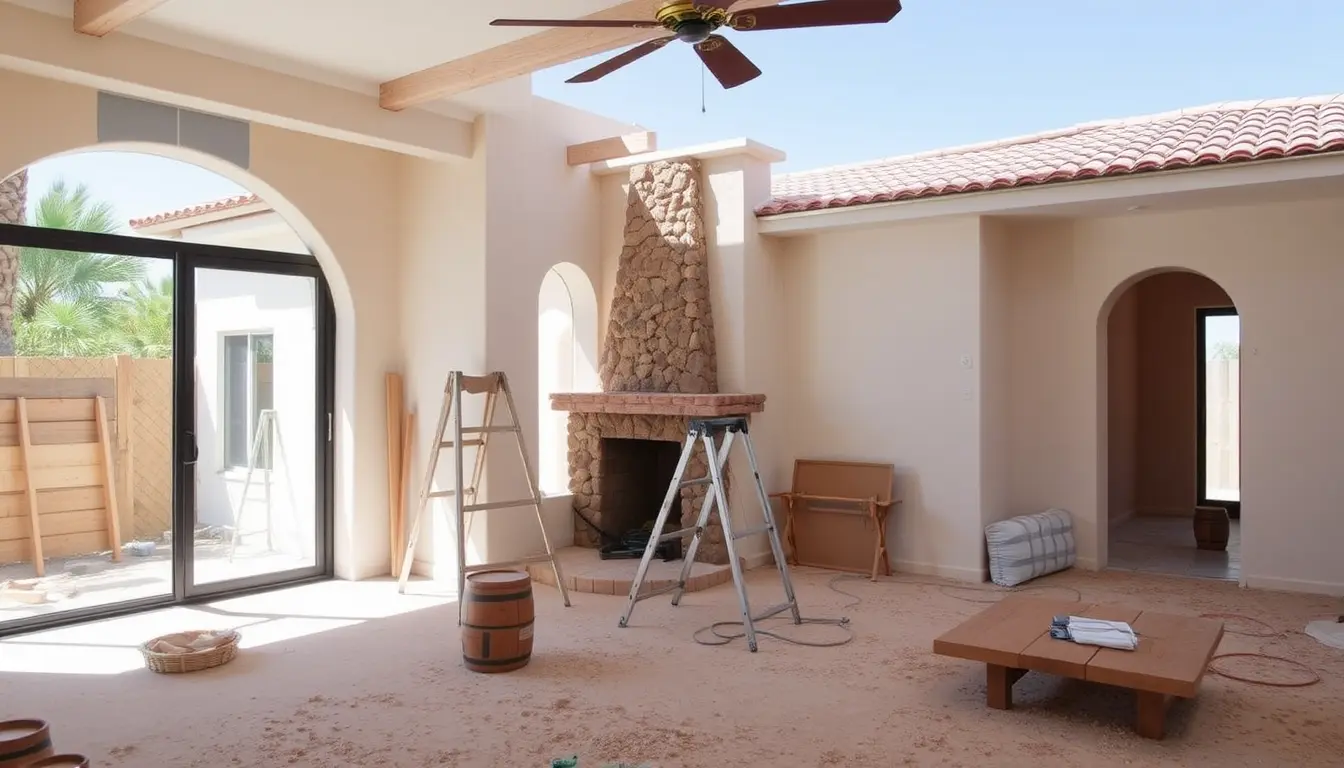
Working with the right professionals is crucial. You want someone who understands the delicate balance between preservation and innovation. Someone who sees these homes as more than just structures – but as living pieces of art that deserve respect and careful treatment.
In the end, modernizing a Spanish-style home is like restoring a classic piece of art. It’s about honoring its original beauty while ensuring it can be enjoyed for generations to come. Each arch, each tile, and each wooden beam has a story to tell. Our job is to help that story continue, bridging the gap between tradition and contemporary living.
These homes are more than just places to live – they’re a connection to a rich, vibrant history. And with the right approach, they can be just as magical today as they were decades ago.
Sustainability and Spanish Homes
Spanish homes are perfect for eco-friendly updates. I always look at ways to improve insulation first. These homes were originally designed to be eco-friendly before it was trendy. Those thick walls? They’re natural insulators. Those courtyards? Perfect for creating microclimates that keep the home cool. Now, homeowners are taking it a step further by adding solar panels on flat roof sections and creating water-wise landscaping that honors the home’s original connection to the environment.
Water conservation is big in Spanish designs. I often add rainwater collection systems that feed into courtyard fountains or gardens. Solar panels can be hidden on flat roof sections, providing clean energy without disrupting the aesthetic.
For windows, I choose energy-efficient options that still have that classic divided light style.
I’m a fan of using local, organic materials in renovations. Think reclaimed wood for beams and handmade tiles for backsplashes. These choices honor the home’s heritage and reduce its carbon footprint. It’s a win-win!
